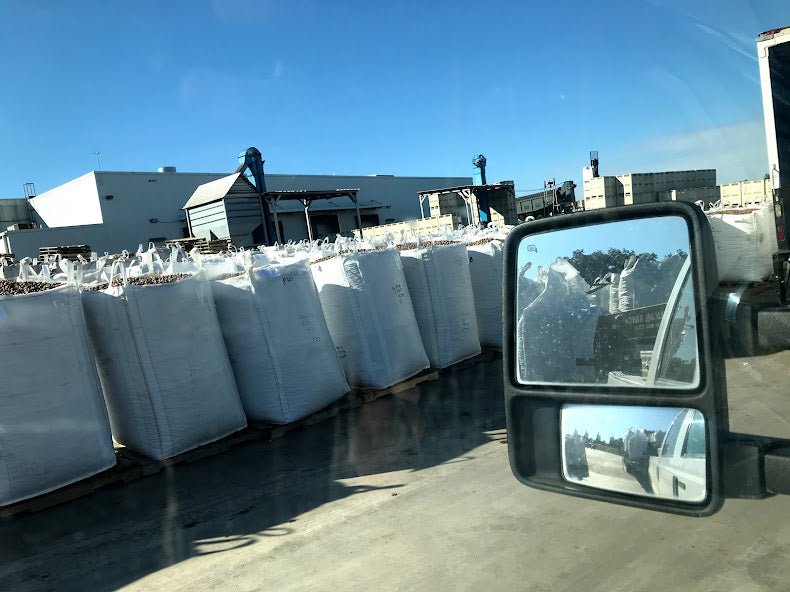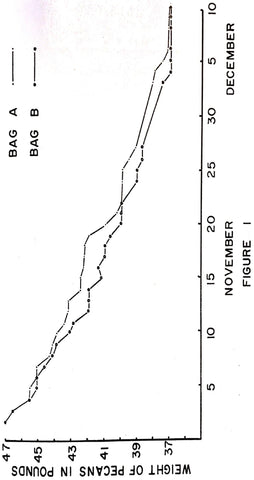
Benton Storey, Department of Horticulture A&M College of Texas College Station, Texas
Pecans harvested early in the season contain a high percentage of moisture. Upon storage a large amount of this moisture is lost in a process known as "shrinking" resulting in fewer pounds of inshell pecans. These drier pecans are of higher quality and are worth more to the consumer. This study points out how the value of green pecans increases each week during the first month of storage.
The green nuts from a Delmas pecan tree were harvested on November 1, 1957. They were so green that in many cases the husks had just begun to split. The husks were separated by hand. Only those pecans were used that had developed a tan color. These pecans were placed in two different burlap bags and stored in common storage. Each bag originally contained 47 pounds of green pecans which were weighed practically every day over a 38 day period. The per cent moisture was also calculated periodically by grinding a sample of kernels and weighing it before and after drying in a vacuum oven for 15 hours at 15 inches of vacuum and 70⁰ C. This process evaporates the water but leaves the oil in the shredded kernels.
The pecans lost moisture for a period of about one month before they reached a constant weight (Figure 1). The percent moisture became constant after a period of about one month (Figure 2). The per cent relative humidity which probably influenced moisture loss was not constant. It was much lower during the latter part of the storage period (Figure 3). Ideal conditions would have been realized at constant relative humidity but such facilities were not available.
After calculating the weight of the pecans each day for a period of one month, the value of the pecans was obtained. This information is given in Table 1, assuming a 30 cent per pound starting value, along with the corresponding per cent moisture.
Table 1. Correlation between storage time, per cent moisture, and value of pecans.

